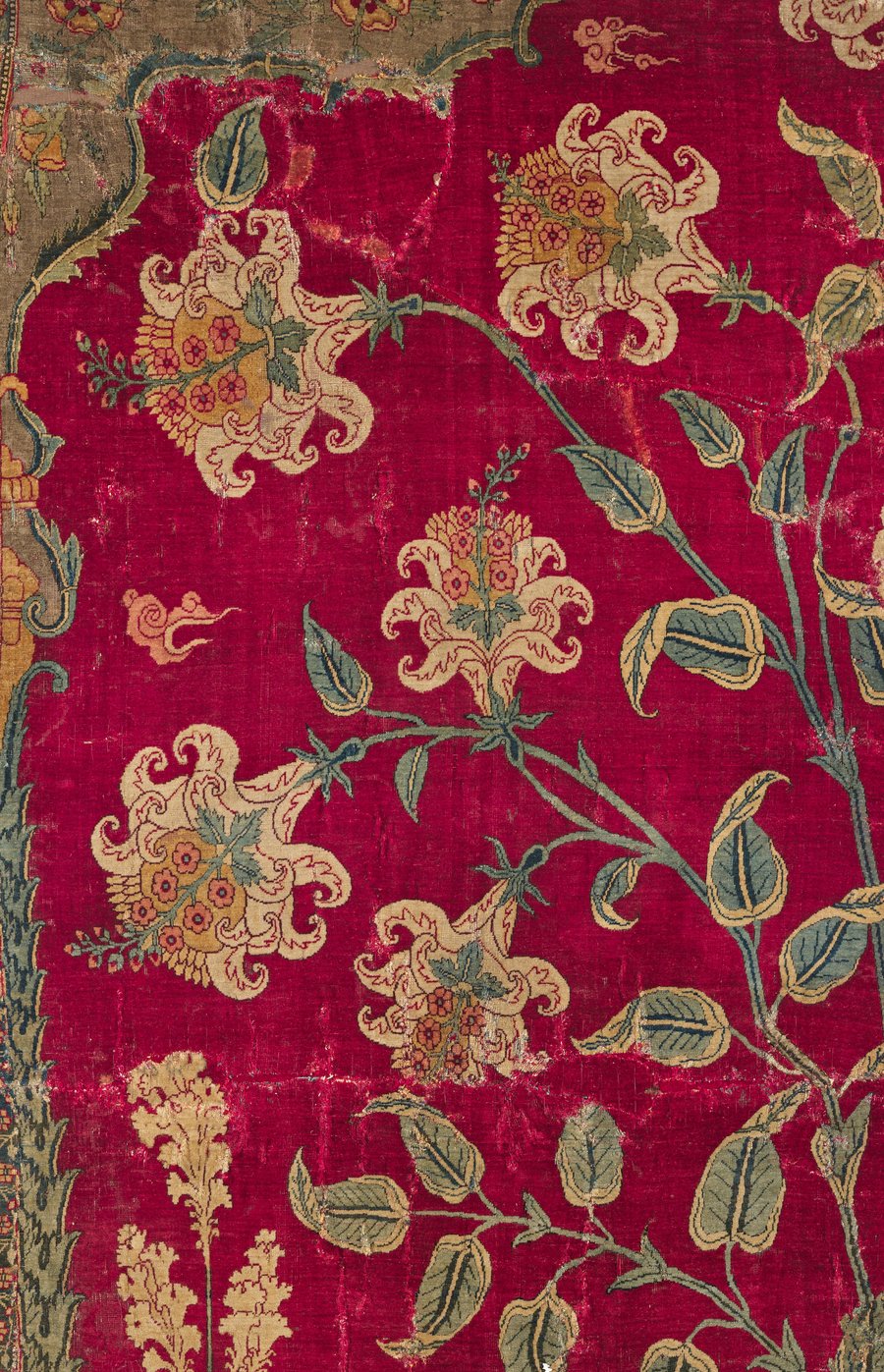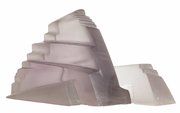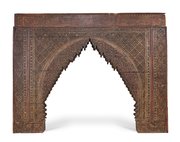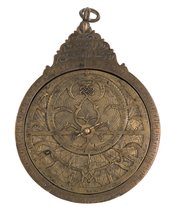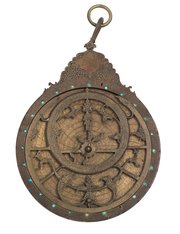
Mughal carpet (known as the 'Aynard rug')
Museum of Islamic Art
- Title:
- Mughal carpet (known as the 'Aynard rug')
- Production place:
- Lahore
- Date:
- 1600 - 1650
- Period:
- Mughal
- Title:
- Mughal carpet (known as the 'Aynard rug')
- Production place:
- Lahore
- Date:
- 1600 - 1650
- Period:
- Mughal
- Material:
- Silk, Wool
- Technique:
- Weaving
- Dimensions:
- 124.5 × 89.8 cm
This carpet, known as the Aynard rug after a previous owner, shows a flowering plant (possibly a lily or iris) stemming from a single vegetal tuft, flanked by a tulip, poppy and cypress tree all set against a deep red madder background. The floral sprays emerge beneath a polylobed arch or niche (mihrab) suggesting that this rug might have been used for prayer. In addition, Chinese motifs such as small cloud bands and stylised rocks appear within the space between the flowers and along the edge of the field, as well as across the bottom of the niche. The naturalistic manner in which the petals and leaves are depicted, delicately folding over themselves, demonstrates the exceptional skill of the carpet's weavers, suggesting it was made in an imperial Mughal workshop. In addition, the high knot count is extremely fine (174 per square centimetre), an effect made possible by its use of fine materials, such as pashm, a lustrous wool traditionally used in making Kashmir shawls. This rug might have originally been part of a multiple payer rug (saf), as repairs and added patches suggest; it could have also formed a larger composition used to decorate the interior of a palace or tent.
